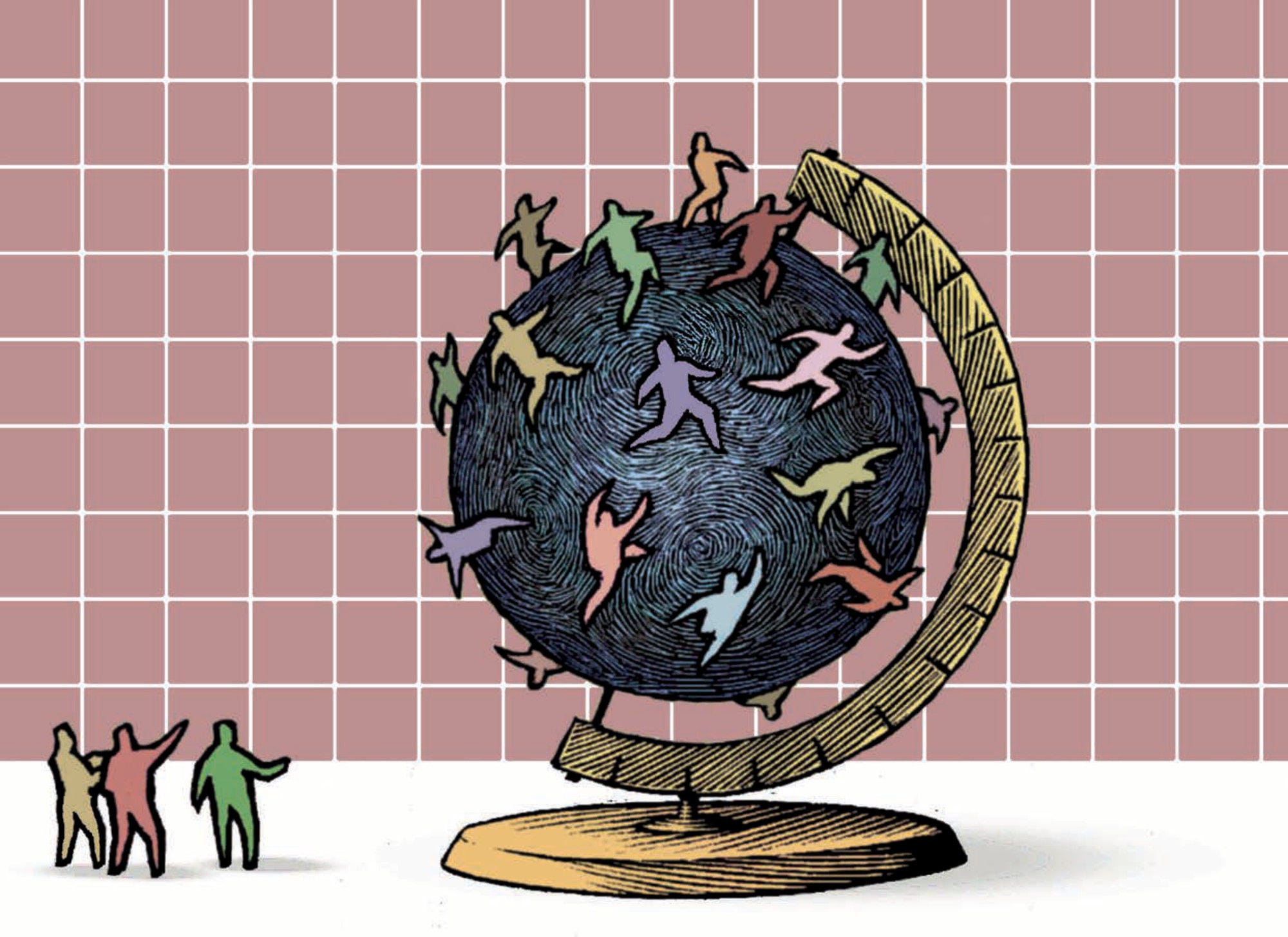The 2021 edition of International Migration Outlook analyses recent developments in migration movements and the labour market inclusion of immigrants in OECD countries. It also monitors recent policy changes in migration governance and integration in OECD countries. This edition includes two special chapters, one providing an in-depth analysis of the fiscal impact of migration in OECD countries since the mid 2000s and another on the causes and consequences of the residential segregation of immigrants. The Outlook also includes country notes and a detailed statistical annex.
International Migration Outlook 2021

Abstract
Executive Summary
Migration flows dropped by at least one‑third in 2020, due to the COVID‑19 pandemic
Permanent migration flows to OECD countries declined by more than 30% in 2020, to about 3.7 million – the lowest level since 2003. This drop could be as much as 40%, depending on which factors are taken into account.
All categories of permanent migration experienced a drop in 2020, with family migration showing the largest decline. Preliminary estimates suggest that intra-EU movements were slightly less affected, dropping 17%. Temporary labour migration also decreased sharply in 2020: the amount of working holidaymakers dropped, on average, by 58% and intra-company transfers by 53%, while the flow of seasonal agricultural workers only declined by 9% and even slightly increased in the main destination countries for such workers, e.g. the United States and Poland.
The number of new asylum applications in OECD countries fell by 31% in 2020; the sharpest drop since the end of the Balkan crisis in the early 1990s. However, the overall number remained above any year preceding 2014 except 1992. For the second consecutive year, Venezuela was asylum seekers’ main country of origin, followed by Afghanistan and Syria. Only 34 400 refugees were resettled in 2020; this is two‑thirds less than in 2019 and the lowest number on record.
The COVID‑19 crisis ended 10 years of continuous progress for immigrants’ labour market outcomes
In 2020, migrant employment rates declined in three out of five OECD countries, while migrant unemployment increased in three out of four countries. Gaps between foreign-born and native‑born labour market indicators reached on average 2 percentage points for employment and more than 3 percentage points on unemployment. The labour market outcomes of immigrants have, however, not changed significantly in countries that used large job retention schemes during the crisis or in those with significant return migration. Immigrants from Latin America and the Middle East have been more negatively affected than other groups. On average in the OECD, more than two‑thirds of immigrants were employed and one in ten migrants was unemployed in 2020.
Migration policy changes in 2020 were mostly driven by the pandemic
Throughout 2020 and into 2021, the majority of OECD countries have maintained travel restrictions and curtailed immigration services, due to COVID‑19. Most used temporary measures to mitigate the pandemic’s effects, including:
Facilitating the entry of essential workers such as health care and seasonal agricultural workers
Taking steps to ensure that migrants affected by the crisis could continue to stay legally
Permitting international students to delay studies, begin coursework on line or work longer hours than usually allowed under student visas
Integration measures were also significantly impacted by COVID‑19 throughout 2020. In many countries, integration obligations were relaxed or deadlines extended. The pandemic also fostered the use of digital tools for integration programmes, host-country language learning and outreach to migrant populations. Supports for vulnerable migrants were in place in most countries, with particular focus on encouraging migrants to access health care.
In the context of the pandemic and other events in 2020, many OECD countries and the European Union have implemented action plans to combat discrimination and its impact on those perceived to have a migrant background.
The fiscal impact of migration on OECD countries
In the 25 OECD countries with available data, on average during the 2006‑18 period, immigrants contributed more in taxes and contributions than governments spend on their social protection, health and education. The contributions of immigrants generally fully cover their share of congestible public goods, and contribute to the financing of pure public goods, such as defence and public debt charges.
The total net fiscal contribution of immigrants was persistently small during 2006‑18, between ‑1% and +1% of GDP for most countries. The situation is not the same in all countries, but this is often due to differences in the ages of their migrant populations: older migrants do not contribute at the same level as the working-age migrants.
Closing the employment gap between prime-age migrants and native‑born of the same age, gender and education level could increase the total net fiscal contribution of migrants by over one‑third of a GDP percentage point in about 30% of countries. The economic consequences of the COVID‑19 pandemic calls for maintaining, if not increasing, investments in the labour market integration of recently arrived and settled migrants, as these programmes have a very high fiscal return.
The causes and consequences of migrant segregation
In all OECD countries, migrants are concentrated in certain areas, especially in the poorer neighbourhoods and the outskirts of large metropolitan cities. However, not all immigrant groups are concentrated to the same extent and this is shaped by both geography and historical settlement patterns.
The effects on integration are complex. On the one hand, arrival in high concentration areas is often associated with better initial employment prospects. On the other hand, in the longer run, immigrant concentration tends to hamper host-country language acquisition and, in many cases, educational advancement for immigrants’ children. There is also some evidence that residential segregation has more negative effects on women than on men.
Policies should not primarily focus on preventing migrant residential segregation, but rather on enhancing mobility out of those areas. More attention should also be given to the quality and accessibility of housing for immigrants.
Key findings
At about 3.7 million, permanent migration to OECD countries in 2020 was at its lowest level since 2003.
Temporary labour migration declined in all OECD countries in 2020, most notably in Australia (‑37%), Canada (‑43%), Japan (‑66%), Korea (‑57%), and the United States (‑37%).
The number of study permits delivered in 2020 declined sharply, by 70%, in both the United States and Canada, and by ‑40% on average in OECD EU countries.
The number of new asylum applications in OECD countries fell by 31% in 2020, resettlement by 65%.
In 2017, the contribution of immigrants to the financing of pure public goods represented a total of USD 547 billion in the 25 countries included in the analysis.
In most EU OECD countries, a concentration of migrants’ children in schools is associated with a penalty in terms of their educational levels attained. In Austria, Belgium, France, Germany, Greece, the Netherlands, and Sweden, this is more than a year less of schooling. Native‑born descendants of immigrants living in segregated neighbourhoods also tend to have lower educational attainment levels.
In the same series
Related publications
-
 4 September 2024
4 September 2024 -
 28 June 2024
28 June 2024 -
 11 June 2024
11 June 2024








